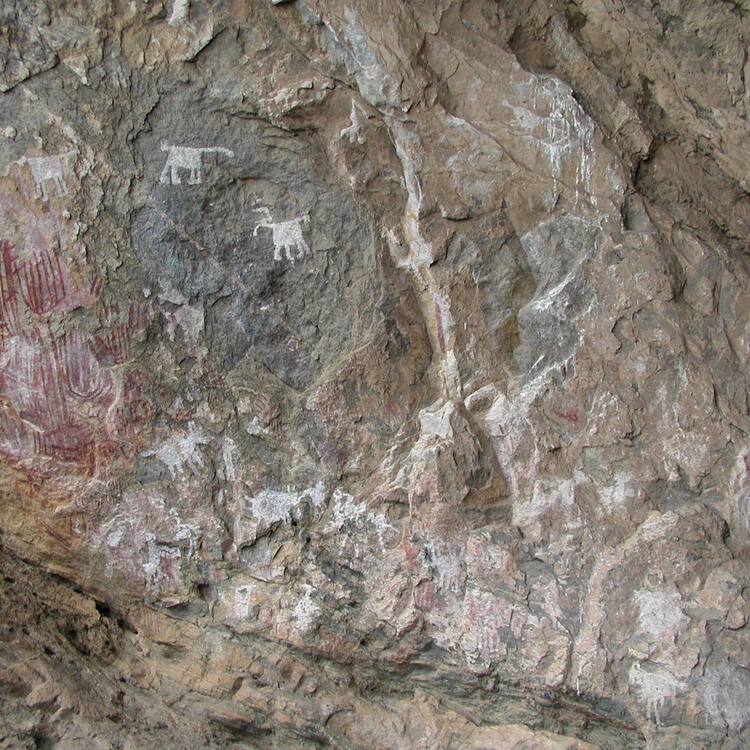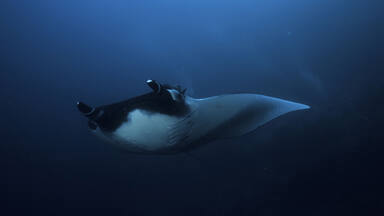Chongoni Rock-Art Area
Chongoni Rock-Art Area
Situated within a cluster of forested granite hills and covering an area of 126.4 km2, high up the plateau of central Malawi, the 127 sites of this area feature the richest concentration of rock art in Central Africa. They reflect the comparatively scarce tradition of farmer rock art, as well as paintings by BaTwa hunter-gatherers who inhabited the area from the late Stone Age. The Chewa agriculturalists, whose ancestors lived there from the late Iron Age, practised rock painting until well into the 20th century. The symbols in the rock art, which are strongly associated with women, still have cultural relevance amongst the Chewa, and the sites are actively associated with ceremonies and rituals.
Description is available under license CC-BY-SA IGO 3.0
Art rupestre de Chongoni
Situé sur un groupe de collines boisées de granite, la réserve de Chongoni occupe 126,4 km2 sur le haut plateau central du Malawi. Sur 127 sites, elle abrite le plus dense des ensembles d’art rupestre de la région. L’ensemble de Chongoni reflète la tradition - relativement rare - de l’art rupestre des agriculteurs mais aussi les peintures des chasseurs-cueilleurs BaTwa qui habitèrent le secteur à partir de l’âge de pierre tardif. Les agriculteurs Chewa, dont les ancêtres vivaient dans la région depuis l’âge de fer tardif, pratiquèrent la peinture rupestre jusqu’à une époque avancée du XXe siècle. Les symboles de l’art rupestre, étroitement associés aux femmes, sont toujours d’une grande pertinence culturelle parmi les Chewa, et les sites sont associés à des cérémonies et rituels qui ont toujours cours.
Description is available under license CC-BY-SA IGO 3.0
فن النقش والرسوم على الصخور في شونغوني
تقع محميّة شونغوني على تلال الصوان المشجَّرة، وتبلغ مساحتها 126.4 كلم2 على الهضبة المركزيّة العليا في ملاوي. تشمل أكبر مجمّعات النّقوش والرسوم على الصخور على مستوى المنطقة (127 موقعًا). وتعكس مجمّعات شونغوني تقليدًا نادرًا نسبيًّا يُعرف بفنّ النقش والرسم الذي استخدمه المزارعون والصيّادون – القطافون الذين أقاموا في المنطقة بدءًا من العصر الحجري المتأخّر. وكان مزارعو شيوا، الذين استقر أجدادهم في المنطقة منذ العصر الحديدي المتأخّر، يمارسون هذا النوع من الفنون حتى فترةٍ متقدّمةٍ من القرن العشرين. ويُذكر أنّ رموز هذا الفن المتّصل بشكلٍ وثيقٍ بالنّساء تكتسي أبعادًا ثقافيّةً كُبرى لدى سكان شيوا، وكثيرًا ما ترتبط المواقع باحتفالات وطقوس ما زالت متَّبعة حتى اليوم.
source: UNESCO/CPE
Description is available under license CC-BY-SA IGO 3.0
琼戈尼岩石艺术区
琼戈尼岩石艺术区位于马拉维中央高原树林丛生的花岗岩山岗上,占地126.4平方公里。该地区127处遗址最集中、丰富地展现了中部非洲的岩画艺术。它们反映了相对贫乏的农民岩画艺术传统,以及自后石器时代就居住于此的群居猎人巴特瓦的绘画艺术。切瓦农民的祖先生活在后铁器时代,习练岩画至20世纪。岩画艺术里与妇女关系紧密的符号,在切瓦中仍有文化关联,这些遗址与庆典和仪式紧密相连。
source: UNESCO/CPE
Description is available under license CC-BY-SA IGO 3.0
Наскальные изображения в Чонгони
Расположенный в окружении покрытых лесом гранитных холмов, занимающий территорию 126,4 кв. км на возвышенном плато в центре Малави, этот район выделяется во всей Центральной Африке наибольшей концентрацией наскальных изображений, которые распределены здесь по 127 участкам. Авторами некоторых из этих редкостных росписей являлись охотники-собиратели ба-тва (пигмеи), которые населяли этот район, начиная с позднего каменного века. Другие рисунки выполнены занимавшимися сельским трудом людьми чева, чьи предки жили здесь с позднего железного века, и которые делали росписи на скалах вплоть до ХХ в. Символика наскальных изображений, тесно связанная с женским началом, все еще имеет культурное значение для чева, в этих местах и поныне проводятся церемонии и ритуалы.
source: UNESCO/CPE
Description is available under license CC-BY-SA IGO 3.0
Arte rupestre de Chongoni
Situado en un conjunto de colinas graníticas boscosas de la meseta central de Malawi, el sitio de Chongoni abarca una superficie de 126,4 km2. Posee el conjunto más denso de arte rupestre del África Central, con un total de 127 sitios que muestran las creaciones tradicionales –menores en número– de los pueblos agricultores, así como pinturas de los batwa, un pueblo de cazadores-recolectores que habitó en esta región desde finales de la Edad de Piedra. El pueblo agricultor de los chewa, cuyos antepasados se asentaron en estos parajes desde la Edad del Hierro tardía, ha venido practicando la pintura rupestre hasta bien entrado el siglo XX. Los símbolos de este arte rupestre, estrechamente vinculados a la figura de la mujer, tienen todavía un importante significado cultural para los chewa, y en los sitios ornados con pinturas se siguen practicando todavía ceremonias y rituales.
source: UNESCO/CPE
Description is available under license CC-BY-SA IGO 3.0
チョンゴニ・ロック‐アート地域
source: NFUAJ
Rotskunstgebied Chongoni
Source: unesco.nl
Outstanding Universal Value
Brief synthesis
Situated within a cluster of forested granite hills and covering an area of 126.4 km2, high up the plateau of central Malawi, the 127 sites of this property feature the richest concentration of rock art in Central Africa. They reflect the comparatively scarce tradition of farmer rock art, as well as paintings by BaTwa hunter-gatherers who inhabited the area from the Late Stone Age. The Chewa agriculturalists, whose ancestors lived there from the Early Iron Age, practiced rock painting until well into the 20th century. The symbols in the rock art, which are strongly associated with women, still have cultural relevance amongst the Chewa, and the sites are actively associated with ceremonies and rituals.
The rock art of the Chongoni sites records the cultural history and traditions of the peoples of the Malawi plateau: the transition from a foraging lifestyle to food production, the subsequent Ngoni invasion of the Chewa people, and the coming of the white man. The paintings also depict symbols significant during initiation ceremonies and ritual practices. As a centre of traditional and religious ceremonies, the rock art area encapsulates living cultural traditions. The area’s topography of rock overhangs amongst wooded slopes and grassy clearings provides a protective setting that is integral to the outstanding universal value of the rock art sites.
Criterion (iii): The dense and extensive collection of rock art shelters reflects a remarkable persistence of cultural traditions over many centuries, connected to the role of rock art in women's initiations, in rain making and in funeral rites, particularly in the Chewa agricultural society.
Criterion (vi): The strong association between the rock art images and contemporary traditions of initiation and of the Nyau secret society, and the extensive evidence for those traditions within the painted images over many centuries, together make the Chongoni landscape a powerful force in Chewa society and a significant place for the whole of southern Africa.
Integrity
The great majority of the Chongoni rock art sites are within the boundary of the property, which corresponds to the boundary of the Chongoni Forest Reserve. Five of the 127 designated sites are outside this boundary but are within the buffer zone. The rock art survives in its original state apart from the natural weathering processes over time, some problems with graffiti and water ingress.
The integrity of the rock paintings in their natural surrounds has been to a limited extent compromised. The people who lived in the area were relocated when the forest was declared a reserve and the natural miombo (Brachystegia) woodland has been planted in parts with exotic conifers.
Threats to the integrity of the Chongoni sites relate to lack of staff on site to oversee implementation of the Management Plan, with consequent lack of control of access to the sites.
Authenticity
The Outstanding Universal Value of the rock art sites is expressed through their actual art – design and materials; their location and setting, their function and the spiritual traditions associated with them, all of which continue to thrive today. The same Chewa Nyau masked figures that inspired the rock art can be seen conducting rituals in most villages around Chongoni at all times of the year. The Chewa girls’ initiation ceremony – Chinamwali, continues to be practiced (mostly in secret) in some of the painted shelters containing older Chinamwali rock art.
Protection and management requirements
The rock art and archaeological sites of Chongoni are protected under the Monuments and Relics Act of 1990. The property corresponds with the boundary of the Chongoni Forest Reserve protected under the Forestry Act of 1997.
In the light of the provisions of these two acts, a management plan was prepared for the cultural resources in order to achieve the objectives of Government policy on cultural heritage preservation.
Construction of a management office and interpretation centre is underway in accordance with the management plan. However, management of the site is suffering from lack of funds and trained staff. The Department of Antiquities does not have permanent staff at Chongoni. Periodic inspections are made from the Malawi capital Lilongwe, 80 kilometres to the north.
Trained management staff needs to be stationed permanently at Chongoni as envisaged in the management plan in order for the sites to become officially accessible to the public.
There is also a need for formal agreement between traditional leaders and the Department of Forestry for the use of individual sites, and the forest in general, for religious and traditional ceremonies, and for integration of forestry work with other community initiatives in the property.

